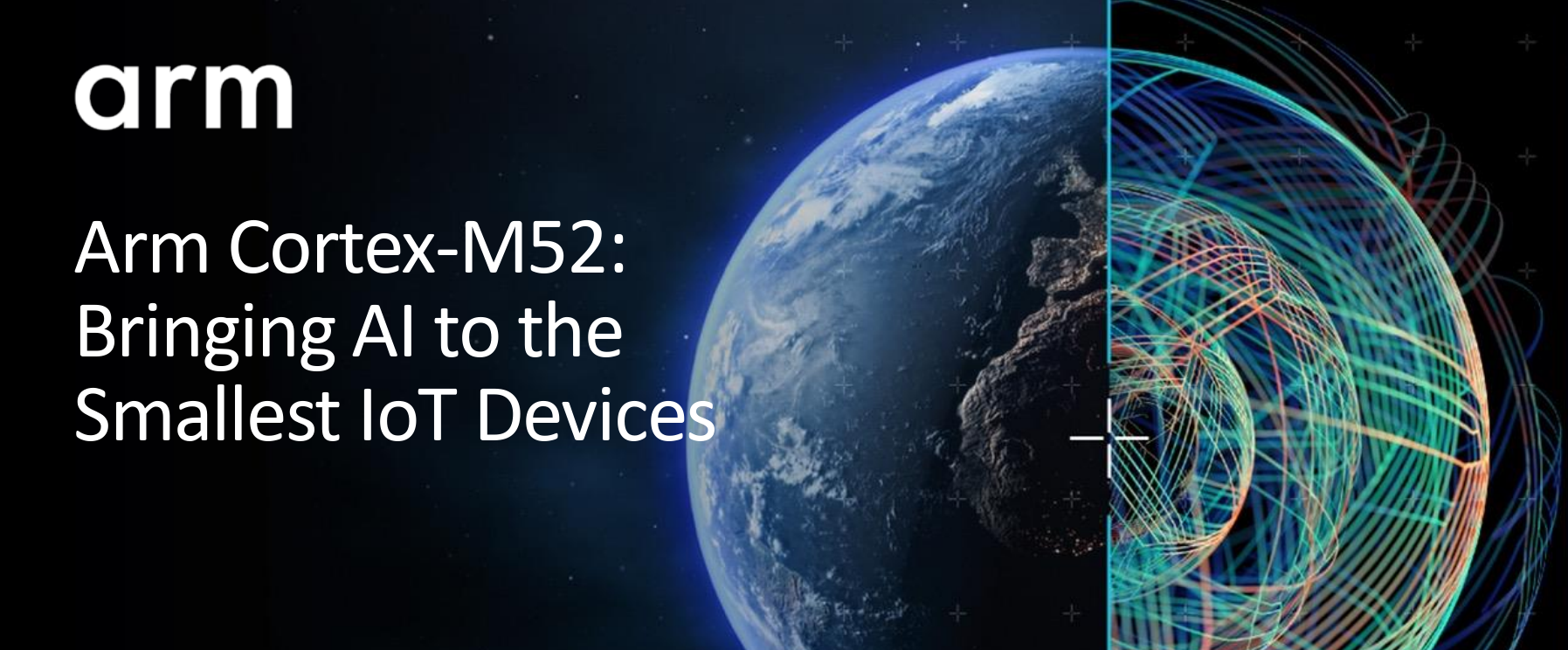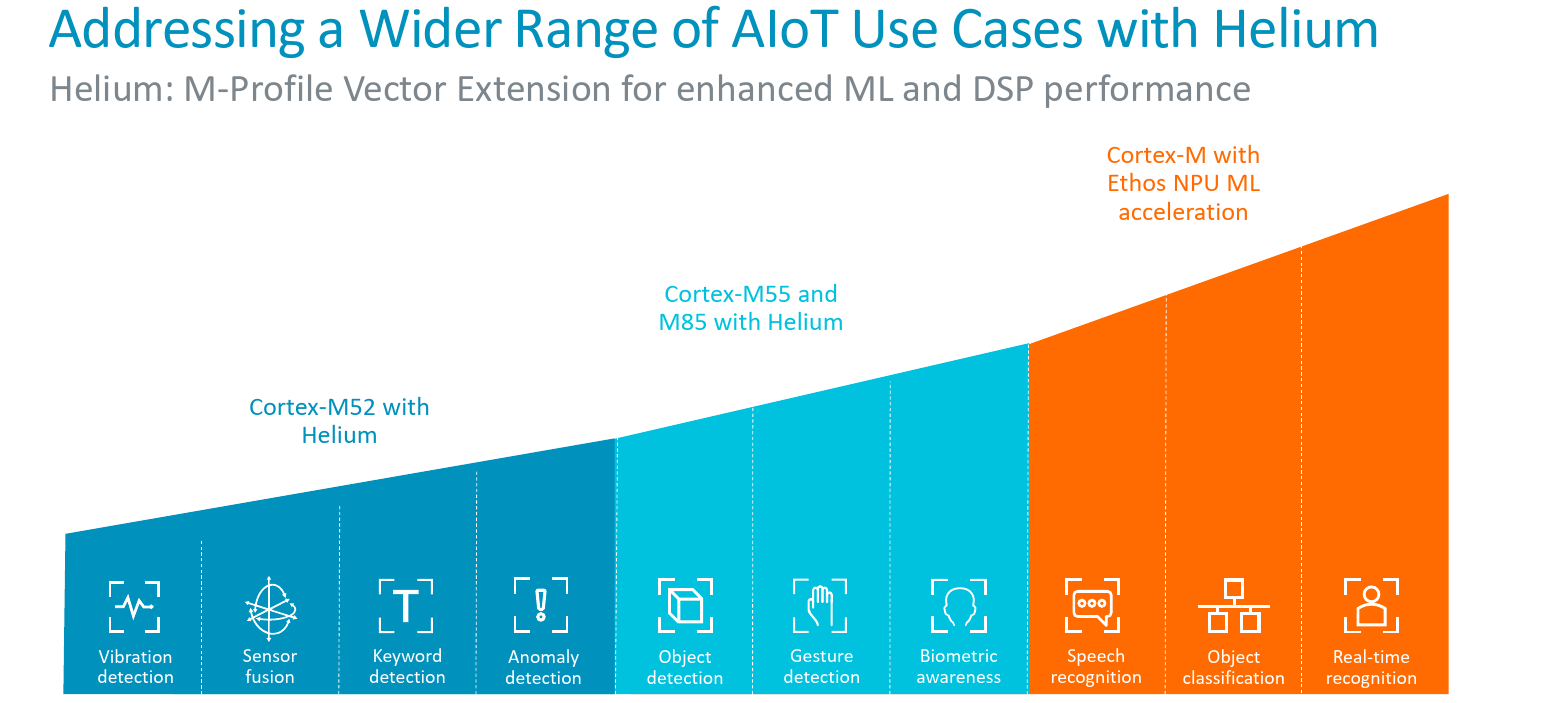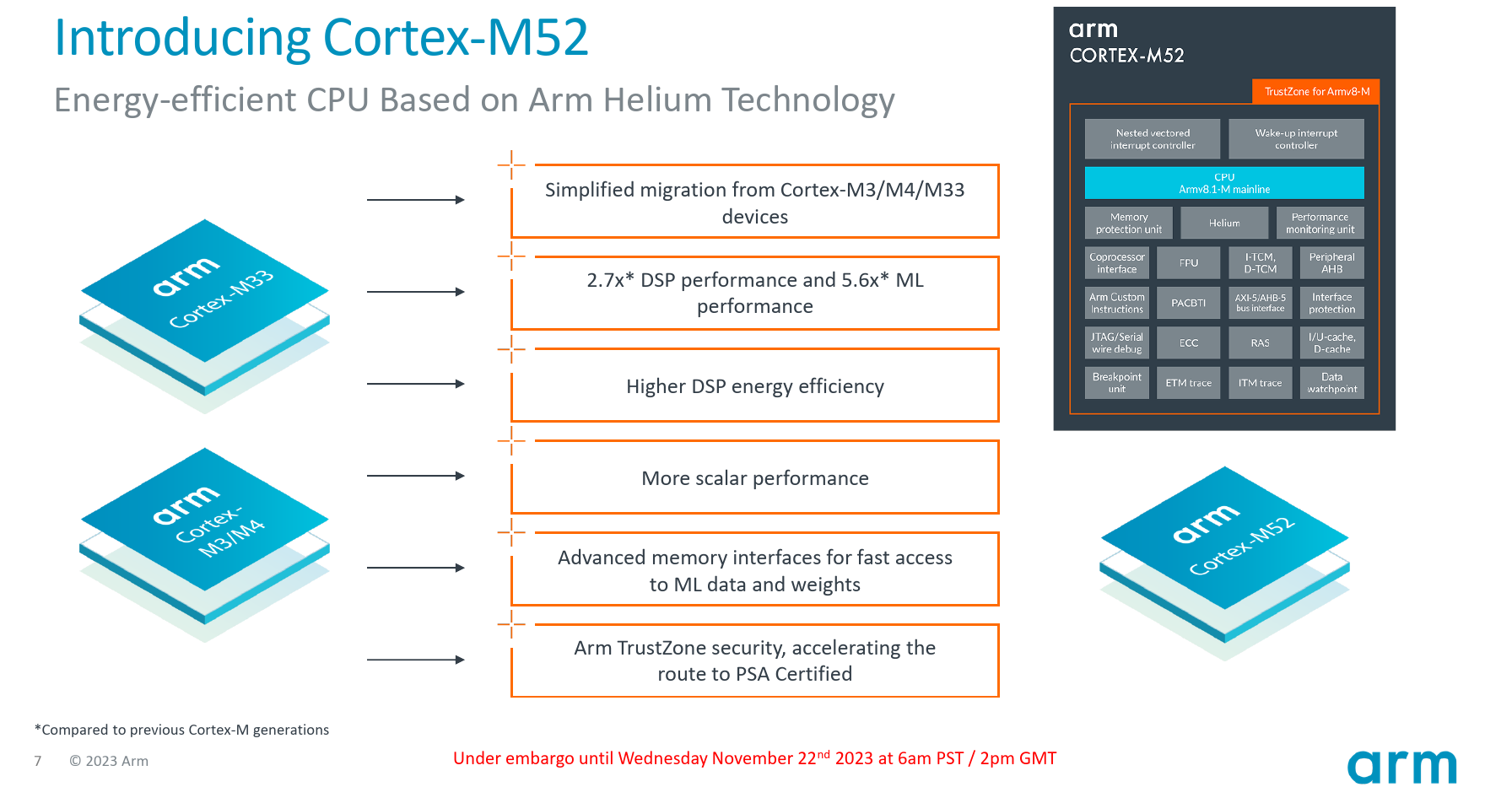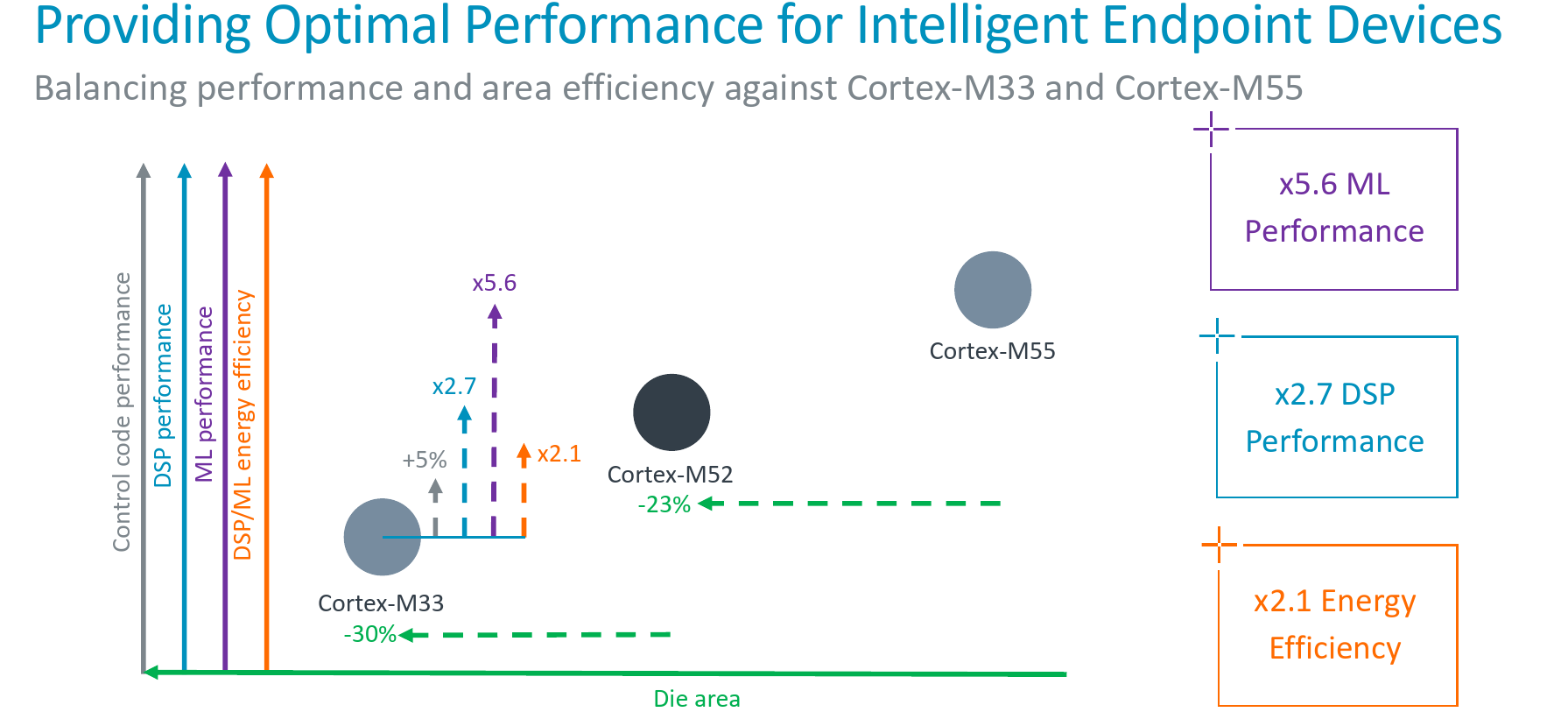Arm Launches the Cortex-M52 For IoT; Its Smallest Processor with Helium

Today Arm is launching a new M-Series CPU – the Cortex-M52. Specifically targeting the IoT world, the new M52 is the company’s smallest, most area and cost-efficient processor integrating Helium, or the Arm M-Profile Vector Extension (MVE). The Cortex-M52 IP, software libraries, toolchain and models are all currently available to customers with first silicon from lead customers expected to arrive next year.
The new Cortex-M52 is the smallest processor from the current M-class lineup. Over the last couple of years we have seen Arm expand its Armv8-M profile lineup with Helium. The first processor to hit the market was the Cortex-M55 which targeted mainstream embedded devices. The Cortex-M55 was launched back in 2020 and was the first M-class core to introduce the Helium vector extension along with the Armv8.1-M architecture while replacing the older Neon extension. More recently, Arm launched the Cortex-M85 which targeted the premium performance side of the market. With this announcement, Arm is filling gap at the lowest-end of the market – targeting IoT devices, endpoint, sensory devices, and most other cost-sensitive small devices.
Aimed at the highly-embedded part of the market, the Cortex-M52 looks to supersede the Cortex-M33 as well as the really ancient Cortex-M4 (mainstream), Cortex-M3 (performance) processors. To that end, Arm says migration should be fairly straightforward. It’s worth pointing out that while the M33 is an Armv8-M device, the M3 and M4 are not. Therefore by migrating from the older Armv7-M, you gain access to Armv8-M capabilities such as TrustZone security. Beyond foundation achitectural features, the new M52 is said to deliver higher energy efficiency in DSP applications, higher IPC performance, and with the help of Helium, considerably higher vector and ML workload performance without the need for a dedicated DSP compute unit.
When compared with the mainstream Cortex-M55, the new Cortex-M52 is said to offer nearly a 25% reduction in silicon area. For additional comparison, the much older Cortex-M33 is around 30% smaller. In other words, the Cortex-M52 benefits all come at around a 10% larger silicon area compared with the prior M33. To that end, the M52 provides around a 5% general performance uplift. Thanks to the Helium vector extension the M52 offers 270% uplift in DSP workloads and 560% uplift in ML performance while improving the energy efficiency by 2.1x.
First silicon from lead customers is expected to arrive next year.
–
Spotted an error? Help us fix it! Simply select the problematic text and press Ctrl+Enter to notify us.
–





